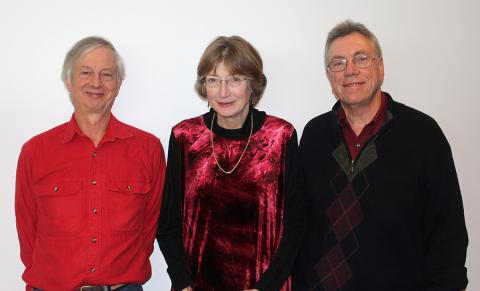CC Patient Provides Resource for Study of Cancer’s Evolution

In a departure from the typical “big data” approach of genome-wide association studies—sampling tens or even hundreds of thousands of people to look for common inherited variation associated with risk of disease—scientists from around the world have collaborated to learn from an individual case, carefully documented over nearly 30 years.
The team, led by Dr. Michael Dean of NCI’s Division of Cancer Epidemiology and Genetics, charted changes in cancer cells through the course of disease for a female patient with chronic lymphocytic leukemia (CLL) treated at the Clinical Center. CLL is the most common leukemia in adults; it tends to progress slowly, in this case affording researchers the opportunity to delve into the genetic characteristics of each stage.
The patient was diagnosed at age 47 in the early 1970s. From 1984 until 2000, she was seen regularly by Dr. Neil Caporaso, senior investigator in the Occupational and Environmental Epidemiology Branch, as part of a family study of lymphoproliferative disorders. He worked closely with another CLL expert from the FDA, Dr. Gerald Marti, to manage her care. Together they published studies describing her cell morphology, differences and similarities between familial and sporadic CLL and characteristics of familial CLL.
Emblematic of the importance of the CLL families, her cells would later contribute to larger studies of chromosomal mosaicism, genome-wide association studies and exome sequencing in familial CLL. “We are deeply grateful to all participants in our family studies program whose generosity allows us to do this type of intensive interdisciplinary research, often without personal benefit to themselves,” said Dr. Margaret Tucker, director, Human Genetics Program. “We could not do this without them.”
As is common with CLL, the patient experienced extended periods of good health following effective treatments. In a remarkable display of foresight, Caporaso and Tucker took steps to collect and freeze tumor cells over the last 18 years of the 29-year disease course. CLL is particularly opportune for these studies because the tumor circulates in the blood, so carefully collected samples can later be cell sorted to obtain samples of both normal and tumor cells for analysis. At the time sample collection began, there were few research tools available to study the different cell types.
Using such varied techniques as single nucleotide polymorphism (SNP) microarray analyses, transcriptome sequencing and whole genome sequencing, investigators describe, in a paper published Dec. 16, 2016, in Nature Communications, the branching mutational path of the patient’s cancer cells. Six overall mutation profiles, or clusters, emerged throughout the disease course and varied in relative percentage from year to year. The clusters were characterized by particular DNA abnormalities such as SNP and gene deletions or duplications or the emergence of extra chromosomes.
Close examination of these patterns, such as which mutations occur together, could reveal details about the molecular mechanics of cancer evolution. “One of the more surprising observations,” noted Dean, “is that certain chromosome alterations tracked closely to treatment patterns. We saw specific chromosome changes appear immediately following therapy, suggesting the ability of cancer cells to adapt to and resist treatments.”
